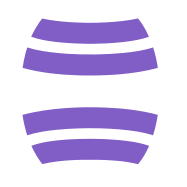Introduction
The term “Web3” often buzzes through the tech scene, promising a new era of internet engagement with decentralization, blockchain, and token-based economics at its helm. At the forefront of this movement is Ethereum, a foundational protocol often synonymous with the Web3 vision itself. In this exploration, we’ll delve deep into Ethereum’s mechanisms, its impact on the digital landscape, and why it stands out as the infrastructure of choice for the decentralized web.
Body
What is Ethereum?
Etherean is more than just a cryptocurrency; it’s a comprehensive ecosystem that enables developers to build and deploy decentralized applications (dApps). Launched in 2015 by Vitalik Buterin and a team of blockchain enthusiasts, Ethereum introduced the concept of a programmable blockchain. It extends beyond the simple transfer of digital currency (which Bitcoin exemplified) and holds the capability of executing complex contracts and agreements, termed “smart contracts,” without any intermediaries.
The Underpinnings of Ethereum: Smart Contracts
At the heart of Ethereum’s functionality are smart contracts. These are self-executing contracts with the terms of the agreement directly written into code. They automatically enforce and execute obligations without requiring a third party. Once deployed on the Ethereum blockchain, they are immutable and distributed across the network, ensuring security and trustworthiness.
Ethereum Virtual Machine (EVM)
The engine that powers Ethereum’s capability is the Ethereum Virtual Machine (EVM), a global, decentralized computer that anyone can use. The EVM ensures that every transaction or smart contract runs exactly as programmed, with no possibility of downtime, fraud, or third-party interference. It’s a playground for developers, as they can create and experiment with dApps, all while providing a layer of security guaranteed by the blockchain.
Ether (ETH): Fuel of the Network
While Ethereum refers to the entire network, the protocol’s native cryptocurrency is called Ether (ETH). ETH is used as “gas” to fuel transactions and smart contract operations within the network. Users must pay a fee in ETH to compensate for the computational energy required to process and validate transactions and smart contracts, inherently preventing spam on the network.
Decentralized Finance (DeFi)
One of the areas where Ethereum has truly shined is in the realm of Decentralized Finance or DeFi. This suite of financial services operates without central financial intermediaries like banks, exchanges, or insurance funds. Instead, DeFi applications (dApps) run on the Ethereum blockchain, offering services from lending and borrowing to asset trading, all in a trustless environment.
Non-Fungible Tokens (NFTs)
Another innovation that Ethereum has popularized is the concept of Non-Fungible Tokens (NFTs). These are unique, indivisible tokens that represent ownership or proof of authenticity of an item or asset, most commonly in digital art and collectibles. Ethereum’s smart contract capabilities facilitate the creation and secure transfer of NFTs, giving value to digital assets in a way that was previously impossible.
Challenges and Upgrades
As with any technology, Ethereum faces its own set of challenges. Scalability is a significant concern, as the network has experienced congestion and high transaction fees during peak usage. In response, Ethereum is undergoing a series of upgrades, collectively known as Ethereum 2.0 or Eth2, which aim to improve the network’s scalability, security, and sustainability. A key feature of Eth2 is the transition from Proof of Work (PoW) to Proof of Stake (PoS) for network validation, significantly reducing the energy consumption of the platform.
Conclusion
Ethereum has set a high bar for what blockchain technology can achieve, stretching the imagination beyond simple transactions to a world filled with possibilities – from financial tools that empower the unbanked to art forms that reshuffle the creative economy. Ethereum demonstrates the power of Web3 through a combination of decentralization, programmability, and community governance. As Ethereum continues to evolve with the upcoming advancements of Eth2, it’s poised to redefine interaction in the digital realm, maintaining its place as the backbone of the Web3 revolution.

